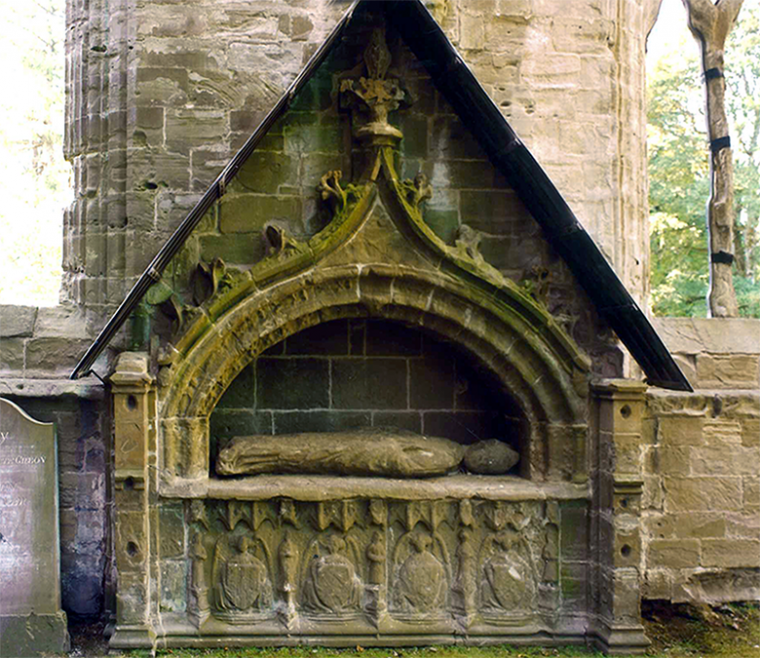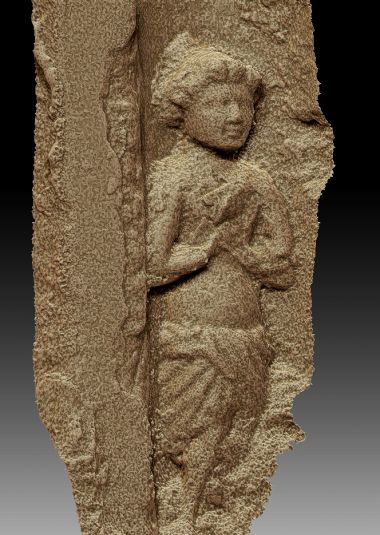Stone carvings hidden for centuries re-discovered at Dunkeld Cathedral

Stone carvings dating back to the 1400s have been found on a bishop's tomb at Dunkeld Cathedral in Perthsire, Scotland.
Dunkeld was one of the most important centres for Christianity in Scotland, with a community having been founded there in the ninth century.
The present building was completed in 1318, although the choir section dates back to the late 1200s.
The re-discovered carvings belong to its longest serving bishop, Bishop Cardeny, who died in 1437. His tomb goes back earlier, having been created 17 years before his death.
Although experts were aware of the carvings adorning the front of the tomb, they had no idea there were any to the rear, which is hidden from direct view.
But a routine inspection of the site by Historic Environment Scotland's (HES) Conservation team has led to the discovery of at least a dozen carved saint-like figures.

The unrecorded carvings were found in the obscured recesses of the tomb using torches and mirrors. Images of the carvings allowed HES to conduct more in-depth analysis with cutting-edge 3D photogrammetric technology.
The discovery has given new understanding to the history of Dunkeld Cathedral as it reveals that the tomb was originally free-standing before being set into the wall at some point in the last 600 years.
HES believes this probably happened during major restoration work to the cathedral carried out by the 4th Duke of Atholl, between 1814 and 1818.
Colin Muir, Stone Conservator at HES who led the discovery, said: 'The discovery of these rare, hidden carvings behind the 15th century tomb of Bishop Cardeny is very exciting, and will enrich our understanding of the history of Dunkeld Cathedral and late medieval stone carving.
'This discovery also gives fresh incentive for further research and exploration of the site, as we still don't know when exactly the tomb was moved, or why. This discovery also hints that there may still be other obscured areas of detail preserved within the walls behind the tomb.'











